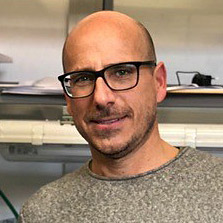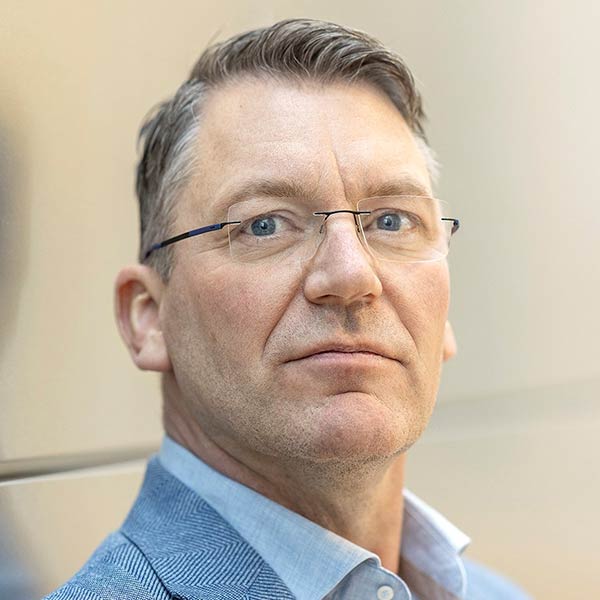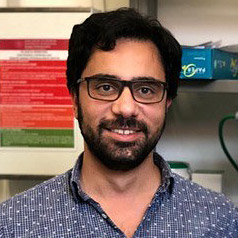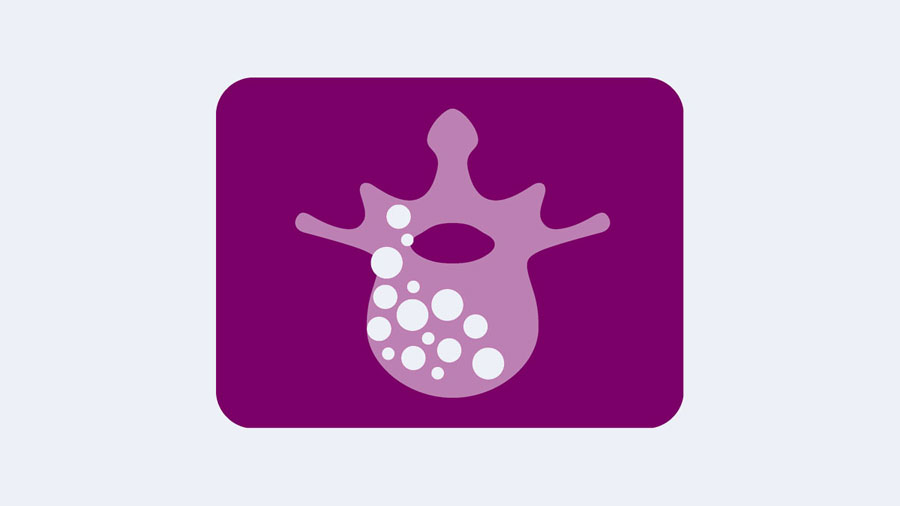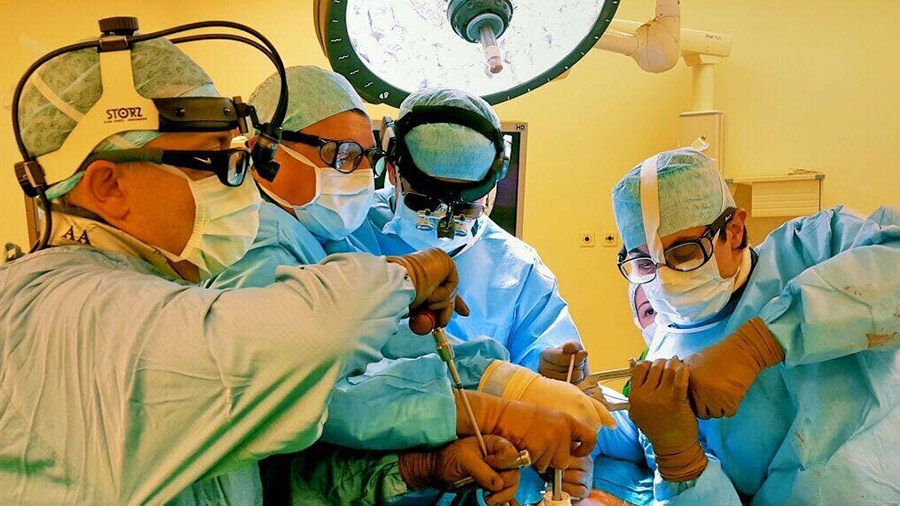Improving assessment methods and treatment options for spinal cancer patients

AO Spine is joining a groundbreaking international research project funded by the European Union's Horizon Europe program. Bringing together an interdisciplinary consortium of 15 partners, METASTRA is striving to revolutionize fracture risk assessment and refine personalized treatment for cancer patients with vertebral metastases.
Around 2.7 million people across the European Union were diagnosed with cancer in 2022. Of these patients, approximately one million are expected to develop secondary tumors. Depending on the kind and location of the cancer, between 30 and 70 percent of these metastases will likely spread to the spine.
For many patients, such vertebral metastases cause significant problems to contend with—on top of their battle with cancer. After all, tumorous vertebrae diminish the spine’s ability to support the body’s weight. Around one in three patients will experience vertebral fractures, which can result in significant pain, postural deformity, damage to the spinal cord and nerve roots which, in turn, may result in paralysis.
Currently, spine surgeons only have two options at their disposal to treat patients with spinal metastases: they can either perform surgery to stabilize the spine, or they can decide against surgical intervention, leaving patients vulnerable to a certain risk of fracture.
“If you do decide in favor of surgery, you really want to make sure it is absolutely necessary—many cancer patients are very weak, and overtreatment can be a considerable health burden,” says Dr Luca Cristofolini, Professor of Biomechanics at the University of Bologna in Italy. “At the same time, you do not want to undertreat and run the risk of fracture.“
Large grey area
However, explains Cristofolini, the decision for or against a procedure is not an easy one to make. Clinicians only have limited data and few indicators to help them decide. The scoring systems currently in use to grade the stability of tumorous vertebrae are based on radiographic imagingas well as the amount of mechanical pain reported by patients. Local biomechanics do not play a role. As a result, only cases at the two extreme ends of the spectrum can be reliably classified—is surgery necessary, or is it not? “60 percent of patients fall into a grey area, where the current classification systems do not provide an accurate indication,” says Cristofolini.
The newly-inaugurated METASTRA project, which is being coordinated by Cristofolini, is aiming to bring that figure down to 20 percent of cases. The interdisciplinary research initiative will develop methods to utilize both artificial intelligence (AI) models and physiology-based mechanical computational models (VPH) to improve techniques for patient stratification and define personalized treatment approaches. The resulting computational models will form the basis of a decision support system (DSS), which can be used by clinicians to reliably categorize metastatic patients. Both computational models and the DSS will be designed to meet regulatory standards and optimized for potential future use.
Supported by the European Union’s Horizon Europe program with a total 6.7 million Euros, METASTRA brings together 15 different institutions from across the continent for a projected duration of five years.
Algorithms and professional experience
“One of the computational models we are building can predict, based on various clinical data points, whether a patient will have a vertebral fracture in the future,” says Dr Jorrit-Jan Verlaan, a professor of orthopedic surgery at the Department of Radiotherapy from the University Medical Center Utrecht in the Netherlands, and a member of the steering committee of the AO Spine Knowledge Forum Tumor (KF Tumor), an international group of approximately 60 dedicated spine oncology surgeons and oncologists. “This will give surgeons time to decide on the best course of action before any neurological damage can occur as a result of vertebral collapse.”
As a spine surgeon, Verlaan looks back on years of hands-on experience in treating spinal metastases, often in close collaboration with radiation oncologists. During that time, he has collected clinical data from hundreds of patients including CT imagery, pain assessments, quality of life, tumor biology and, in each case, information on whether a vertebral fracture eventually occurred. This data will form part of the information used in the METASTRA project, both to extensively train the AI model and to inform the VPH models, enabling them to make accurate predictions on new cases.
“Over their careers, spine surgeons develop pattern recognition abilities that help them decide with increasing accuracy whether a patient needs surgery or not,” Verlaan says. “What we are hoping to build is a system that can mimic whatever is inside the head of a seasoned physician. In a sense, you could say that we are trying to (partly) replace professional experience with an algorithm.”
Personalized VPH models for inconclusive cases
The great advantage of AI models is that once they are built, properly trained and validated, they are easy to operate and comparatively cheap. They are also fast and accurate, and, as they continuously learn from the new cases they are presented with, they get better over time. Nevertheless, they will not present a universal solution for each and every patient.
“The AI will be based on training data, not on mechanistic theory,” explains Dr Marco Palanca, senior assistant professor at the Department of Industrial Engineering at the University of Bologna. “Due to the large variability of the patients we will stratify, there will be instances when the AI model will not be able to perfectly grasp the problem. There will also be times when the expert clinicians do not agree with its output.”
This is where the second component of the METASTRA project comes in. The researchers are working on a set of tools to automatically build personalized mechanical computational models of those patients for whom the AI cannot produce conclusive decisions. A relevant portion of the necessary technical background was developed in projects funded by the AO and the KF Tumor. Palanca, a mechanical engineer and himself an associate member of the KF Tumor, won the 2019 AO Spine Discovery and Innovation Award as well as the 2022 AO Spine Knowledge Forum Associate Member Research Award for projects related to the biomechanical evaluation of cancer patients with metastatic vertebrae.
“I am very proud of the intense collaboration between mechanical engineers and clinicians in this project, and I want to emphasize the important role played by AO Spine in connecting these two worlds,” Palanca says. “The two professions are really far from each other. But combining their different kinds of expertise, their approaches, and their points of view allows us to find the best solutions.”
Effective knowledge dissemination
The AO’s expertise will also have an important role to play in later phases of the project when it comes to the assessment of the DSS, the development of evidence-based guidelines to effectively stratify patients, and, subsequently, the assessment of the guidelines for external validation by the KF Tumor.
“In addition, AO Spine will ultimately be the main partner in terms of the professional dissemination of the project results in the spine community,” adds Dr Áron Lazáry, Deputy Director of the National Center for Spinal Disorders at Buda Health Center in the Hungarian capital Budapest and associate professor at the Department of Spine Surgery at Semmelweis University in Budapest. There are several aspects to this task, says Lazáry, who also currently serves as AO Spine Europe and Southern Africa Research Officer, and is a member of the KF Tumor steering committee.
“To translate the scientific results and developments into clinical practice we have to make surgeons aware of the new technology and convince them of its evidence-based background and its favorable effect on treatment process and on outcomes. We also have to show them the easy-to-use nature of the resulting system.” The KF Tumor will play an essential role in this process by providing expert opinions, developing recommendations, deploying professional marketing, and in terms of education.
Future opportunities
METASTRA is the first project in which AO Spine is contributing as a partner to a research consortium whose work is funded by an independent body. It is an important opportunity for AO Spine, says Lazáry, both to prove its value as a research consortium partner, and as a means of testing the efficacy of its internal and external processes.
He also sees it as a stepping stone on the path to joining more major research partnerships in the future: “Big advances in medical technology in a relatively short time can be achieved only by multidisciplinary consortiums with significant financial resources. Beyond the actual research activity and the resulting knowledge generation, organizations such as AO Spine can help disseminate and implement the results and the new technology.”
Another main advantage of joining projects such as METASTRA is that they allow AO Spine to extend its network—successful participation will allow it to improve its international visibility in the spine community. In the end, says Lazáry, all these effects serve to help the AO’s mission: to improve patient care.
You might also be interested in:
AO Spine Knowledge Forum Tumor
Leading the way in global spine oncology research with landmark studies on both metastatic and the very rare primary spine tumors.
The AO Spine KF Associate Member Research Award
The five winners of the 2022 Awards present their projects that compliment the priorities defined by the AO Spine Knowledge Forums.
Join Global Spine Congress 2024 in Bangkok
Asia Pacific will stage one of the biggest gatherings of international spine surgeons on May 15-18, 2024! An outstanding forum to exchange ideas, network with fellow spine professionals, and learn about the latest research and technologies in spine surgery.


